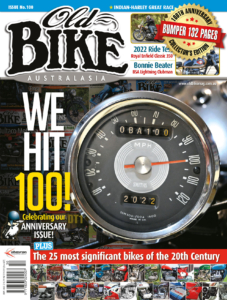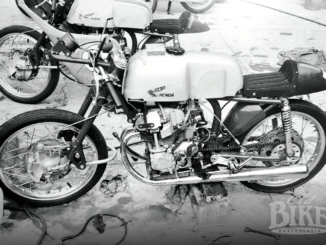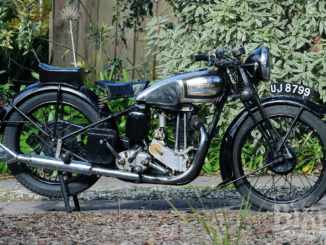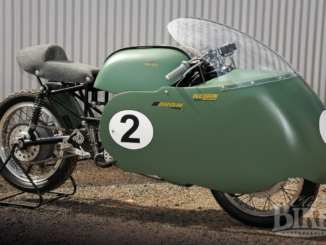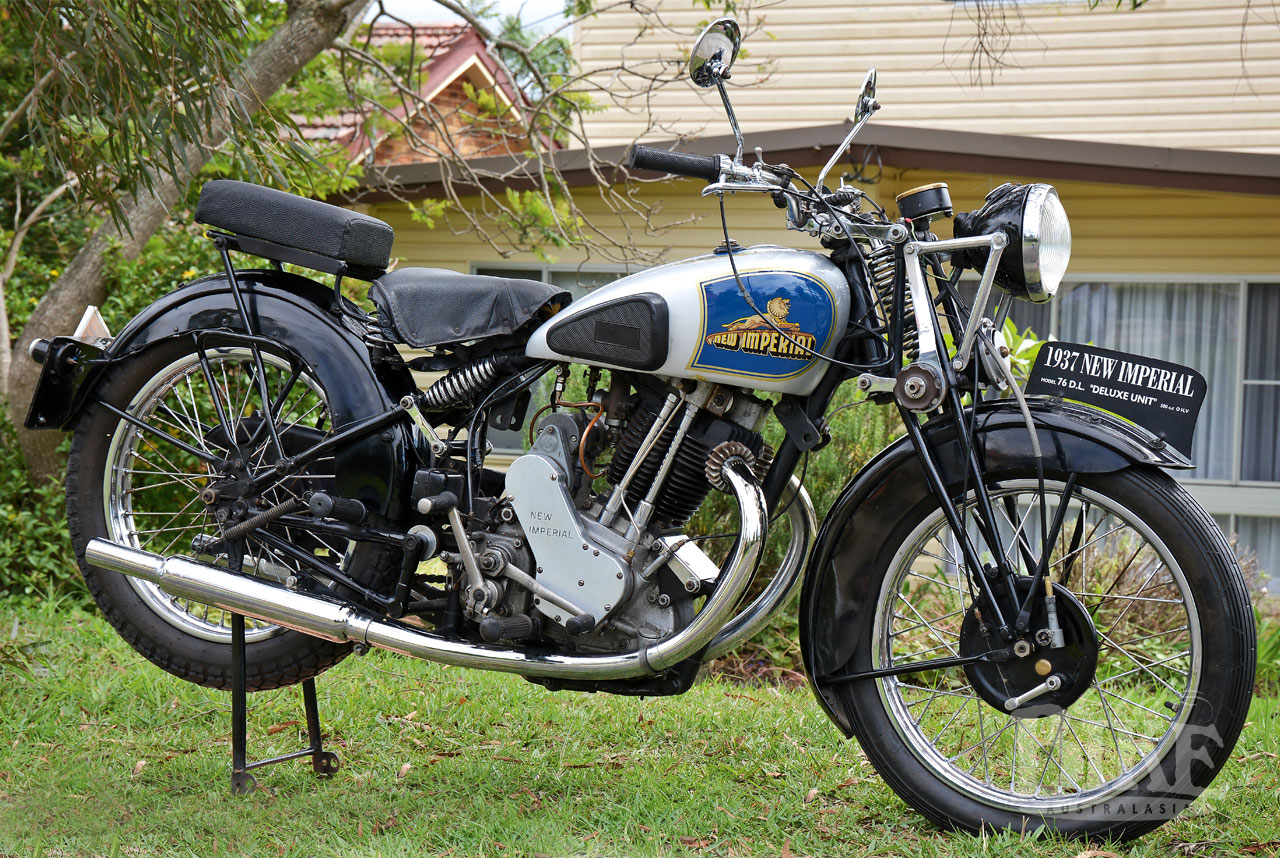
From our Old Bike Archives – Issue 100 – first published in 2022.
Story: Jim Scaysbrook • Photos: Roger Ralston, Jim Scaysbrook, OBA archives.
Twice written off, this rare New Imperial has managed to survive due to the efforts of the family that has owned it through three generations.
New Imperial is not a name that springs to mind these days, despite the fact that the marque was highly successful at the Isle of Man TT and for a time, marketed a quality range of innovative motorcycles.
The story began in 1900, when Norman Downs purchased a failing Birmingham bicycle business called Hearl & Tonks. The contents of the old factory was bundled up and moved just a few blocks away and reopened as New Imperial Cycles. In very short order, Downs decided that motorcycles, not bicycles, were the future although the firm’s initial products were something between the two. Six 500cc engines were ordered bespoke from a nearby engineering business and built into a curious device that had the engine suspended on a bracket in front of the steering head. This arrangement (using a De Doin-Bouton engine) had been used by the Russian Werner brothers some years previously on a bicycle they called the Motocyclette, but this was short-lived and they reverted to a more conventional design which was sold as the New Werner. The New Imperial version used a leather belt to drive the front wheel. When the bikes failed to gain buyers, they were dismantled and the engines used in machinery for chaff cutting.
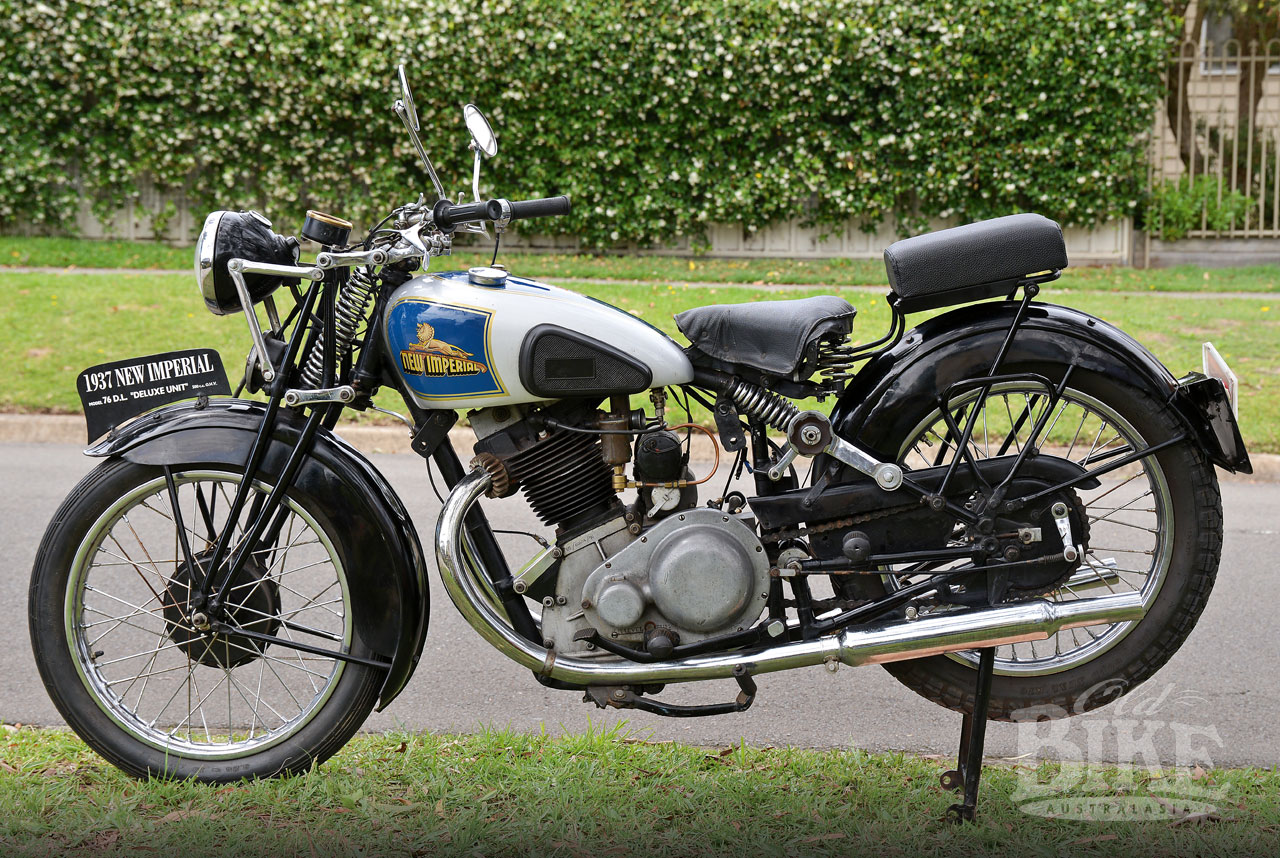
Downs took his time to think things out before trying again, this time using a 293cc side-valve JAP engine with a two-speed gearbox in an orthodox frame. The new model was very successful and with refinement, remained in production for around 15 years. Meanwhile Downs sought to publicise his brand through racing, and the obvious place to do so was the Isle of Man TT. That effort, in the 1913 Senior TT, was a disaster and once again Downs retreated to consider the future. The onset of WW1 effectively put everything on hold, but in 1921 Downs entered a team of five new 250cc models in the combined Junior/Lightweight TT. Only one made it to the finish, but that was in first place in the Lightweight class. The signing of the great Bert Le Vack for 1922 was seen as a scoop, especially as he was equipped with a new DOHC 350cc engine designed by the equally-famous Val Page. However after blitzing the field at the TT and smashing the lap record, he retired with a seized gearbox.
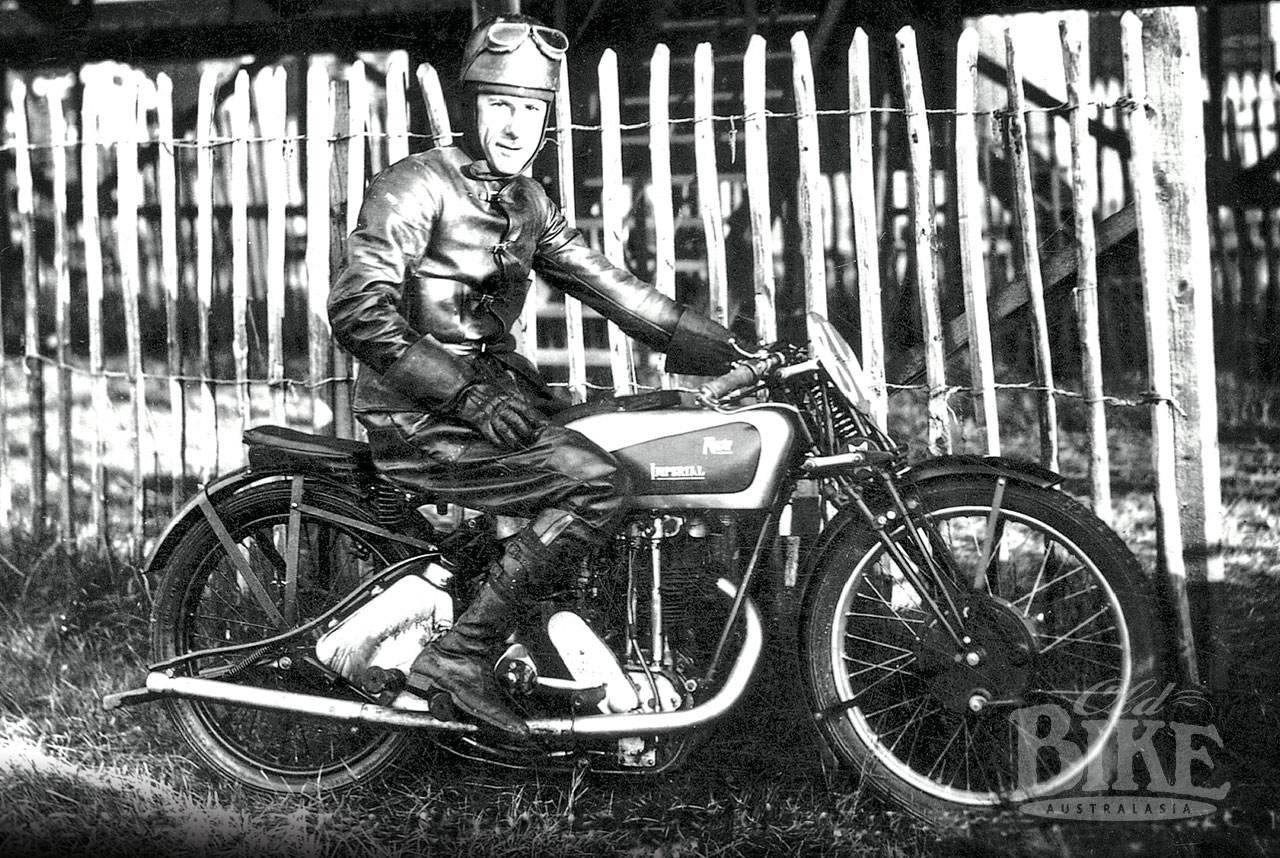
New Imperial really arrived in TT terms in 1924 when two brothers, Edward and Ken Twemlow, won the Lightweight and Junior TTs respectively on JAP-powered New Imperials. Edward won the Lightweight again in 1925, inspiring the company to thereafter design and build their own engines. While the quest for TT glory continued, an all-new 150cc model, which used a unit construction engine/gearbox with enclosed valve gear and helical gear primary drive, attracted plenty of orders. The original design was heavily modified for 1932 with 250cc and 350cc models, all called Unit Minors, joining the 150. The inclined engine was to become the basis of all future models. Due to the gear primary drive the engine rotated backwards.
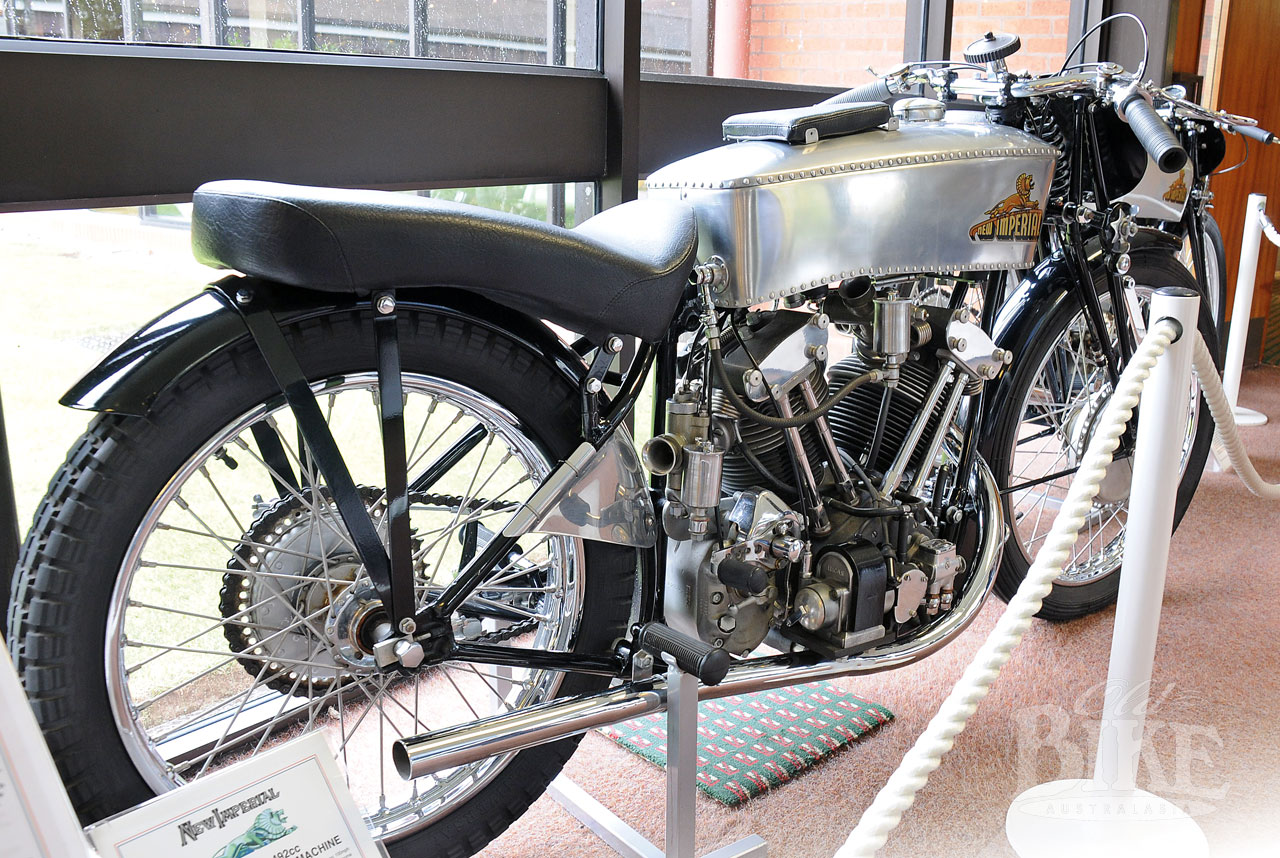
Despite more TT wins however, all was far from well with the company as the ‘thirties progressed. The books showed that New Imperial was perilously close to insolvency, and only the insistence of Downs allowed the racing program to continue. But Downs himself was gravely ill, and died in 1936. The company directors used this as an excuse to close the racing department in order to concentrate on the bread and butter machines, a new range of which had appeared in 1935 in 250, 350 and 500cc form. These were good looking motorcycles, with an overhead valve sloper engine that was in vogue at the time, but it wasn’t enough to save the company, which closed its doors in early 1938.
But that wasn’t quite the finish of New Imperial. The indefatigable Jack Sangers, who had earlier rescued the similarly stricken Ariel marque and did the same with Triumph soon after, took control and restarted production at New Imperial. This was to be a temporary measure, with the aim of moving New Imperial in with Triumph at Coventry in September 1939. It proved to be a significant date. The very day of the planned move of premises, Britain declared war on Germany, and all bets were off. The capacity of the new Imperial factory was switched from motorcycles to car components, mainly steering wheels, and motorcycle production never resumed. Making a complete break, the factory switched to the manufacture of steering wheels for cars.
In a final twist, during the war, Triumph’s designer Edward Turner began thinking about a model that would fill the needs of basic transport once peace returned. He designed and built a prototype 350cc vertical twin – the Triumph 3TU – which would have been marketed as a New Imperial had it gone into production, which it did not. The engine had the cylinders cast in one with the upper half of the crankcases, a one-piece cylinder head and Siamesed exhaust pipes running to a single silencer on the right side. It used heavily valanced mudguards reminiscent of Indians, with pressed steel disc wheels, a rigid rear end and un-damped telescopic forks. The 3TU was a quirky looking machine with very modest performance, so modest that factory testers ridiculed it. It was soon parked in a corner of the works and forgotten until it was purchased by a dealer during the grim days of the Meriden cooperative and restored. The prototype, carrying Triumph badges, has been displayed at several museums and is seen from time to time at shows in Britain.
Back from the dead – twice
The featured New Imperial is a 500cc De Luxe Model 76 from 1937, one of the final iterations of the design that began as the 150, resplendent in a chrome and blue petrol tank. The gearbox is four-speed although foot operated instead of the earlier hand-change models which had a shift-gate bolted to the side of the petrol tank. Unlike the smaller versions, the engine and gearbox are separate items. With the drive side of the crankshaft geared directly to the clutch by helical gears, the engine rotates backwards, a radical feature of the ‘thirties, at least on a British motorcycle.
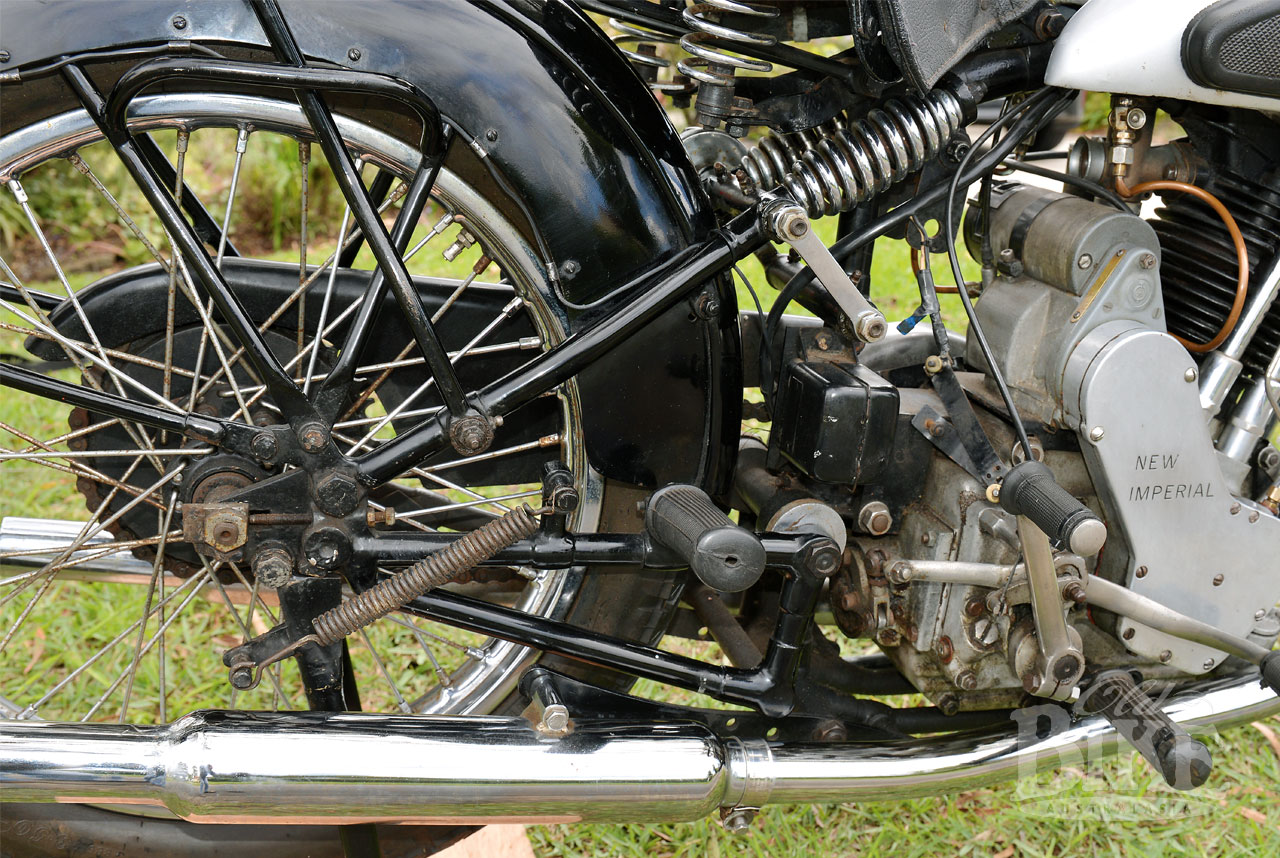
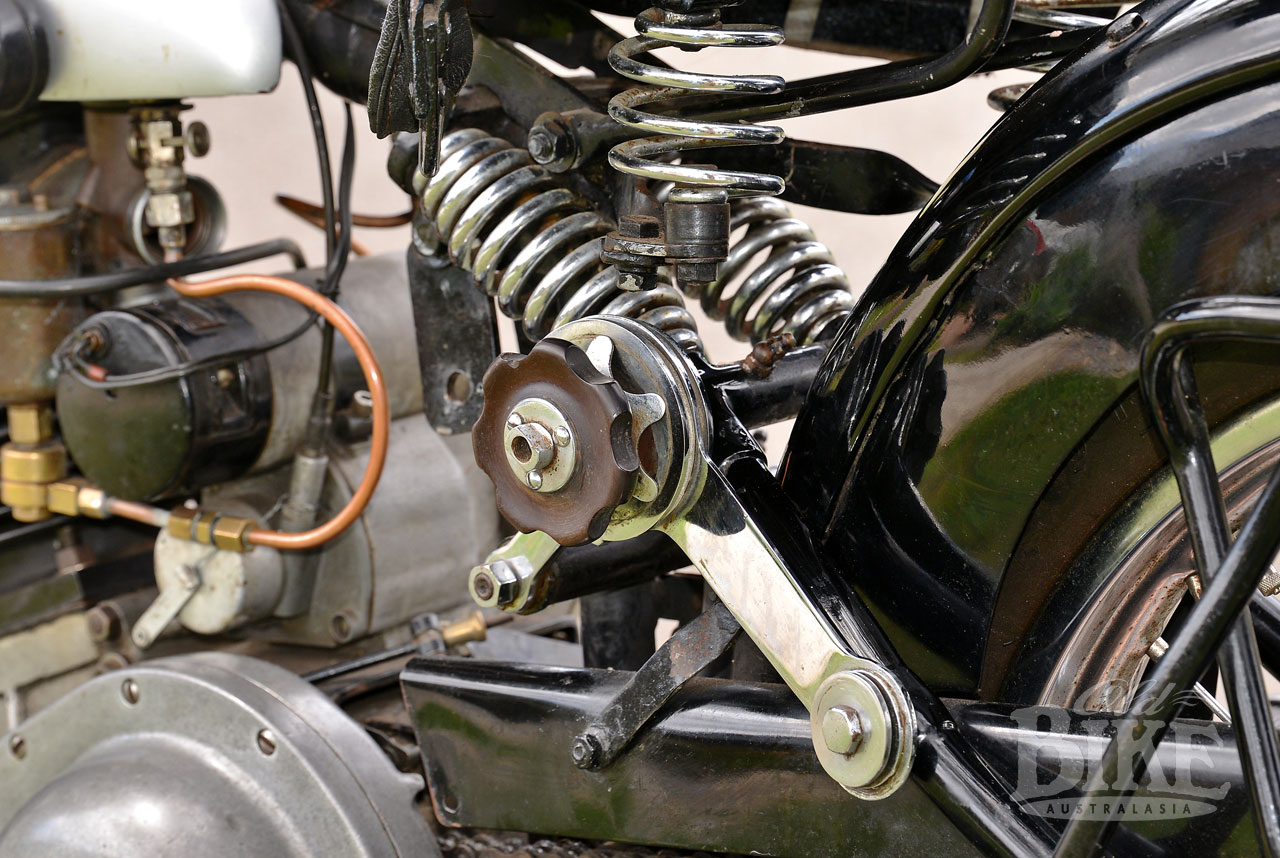
First seen on the unit construction models, the frame features rear end springing via a braced swinging arm controlled by a pair of spring units under the seat. Like the smaller 36 (250) and 46 (350), the new Model 76 was available with a mag-dyno, Maglita or coil ignition. In De Luxe form, a mag-dyno was standard, and the pillion seat was fully sprung. Records supplied by the marque expert John Ferguson, who was at the time the Australian representative for the New Imperial Owners Club in UK, show that the frame (number 77/34833/SF) was built in July 1937. SF denoted spring frame, as opposed to R for rigid frame. From 1937, the same frames were used on models 36 (250cc), 46 (350cc) and 76 (500cc). The engine (number 87/42464/76) came one month later, and as John Ferguson says, “Is as close as you’d come with a New Imperial having a match of engine and frame numbers”.
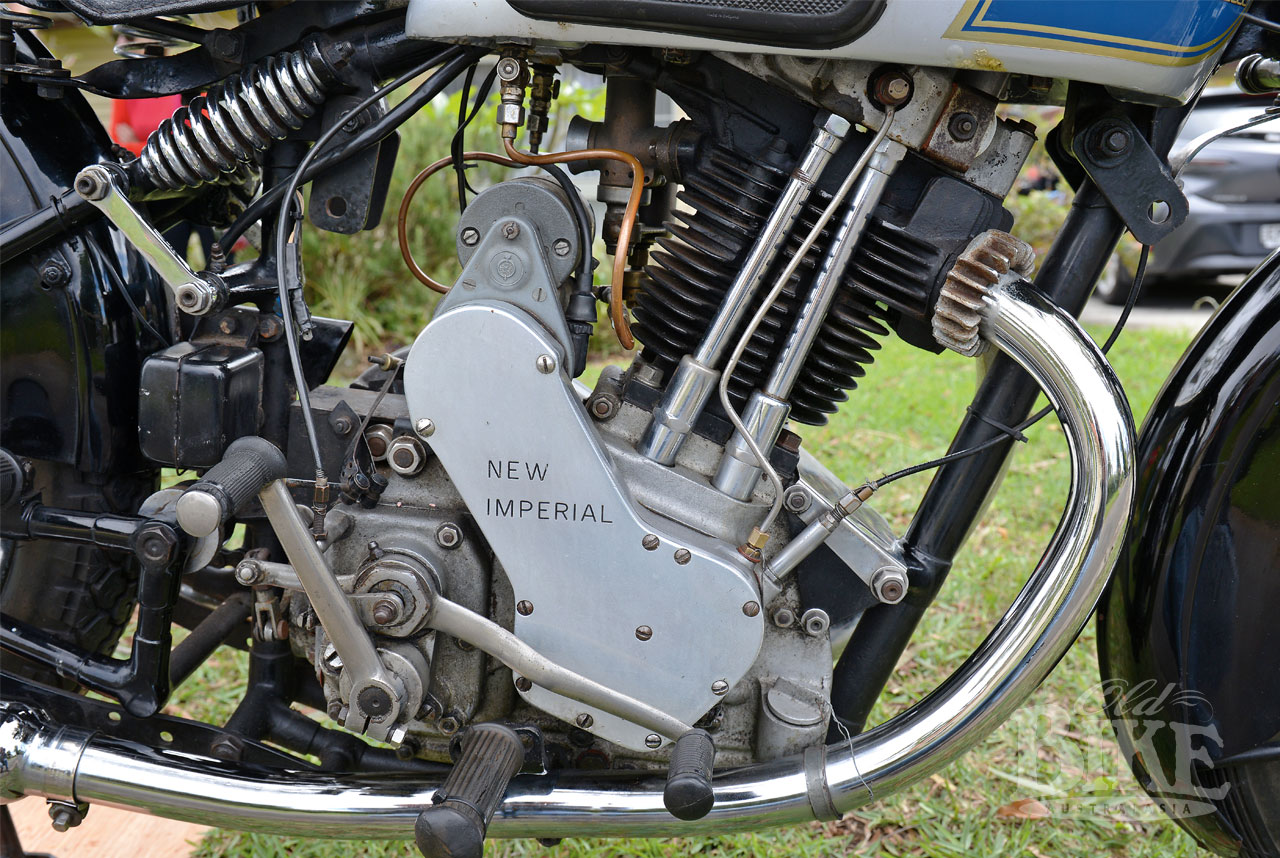
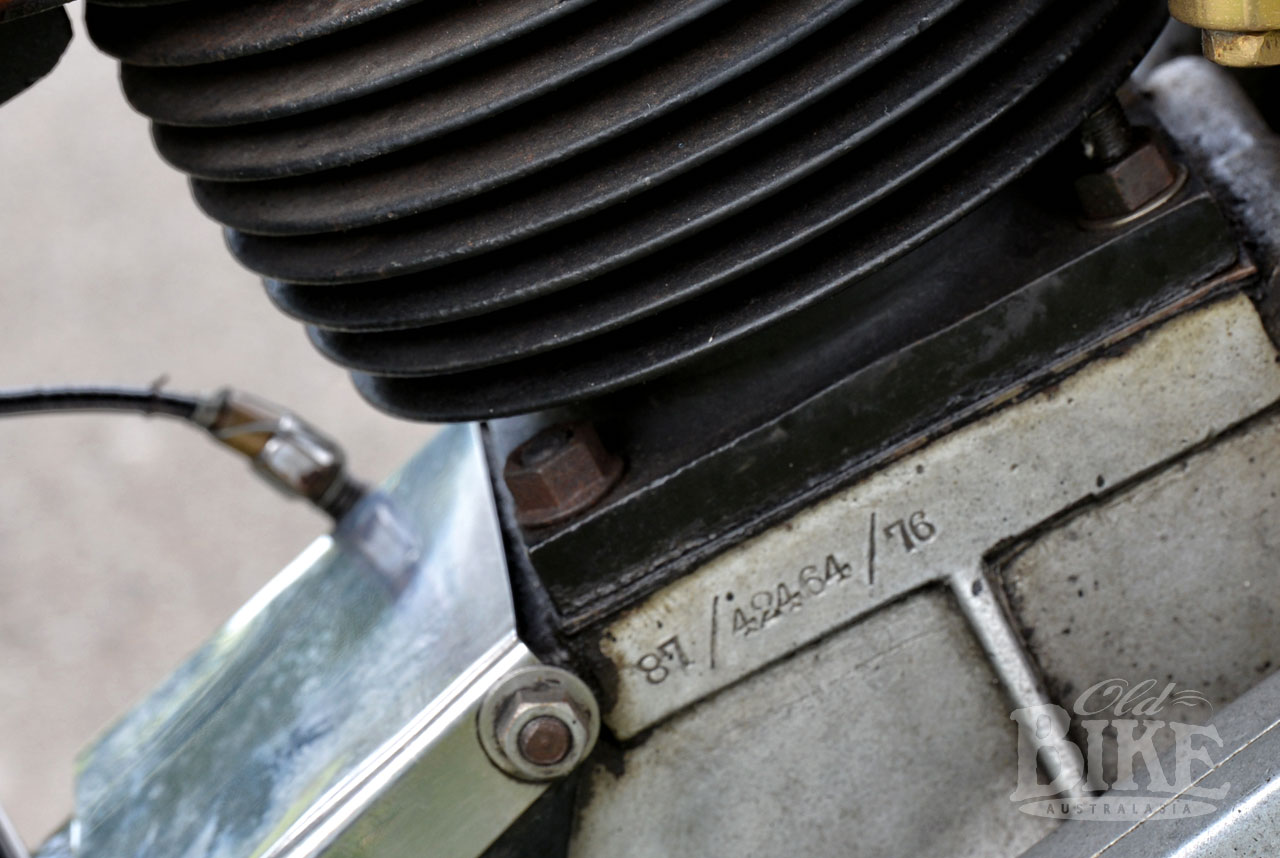
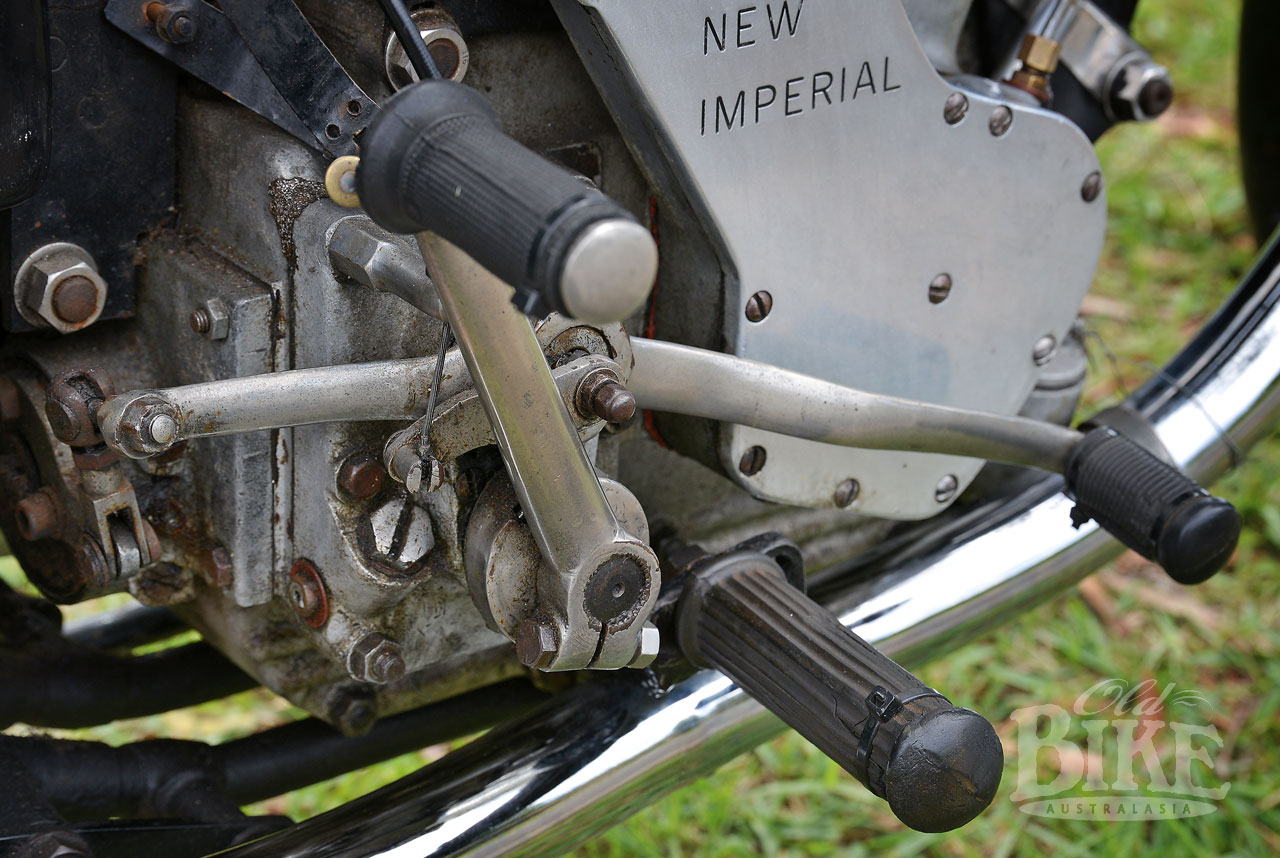
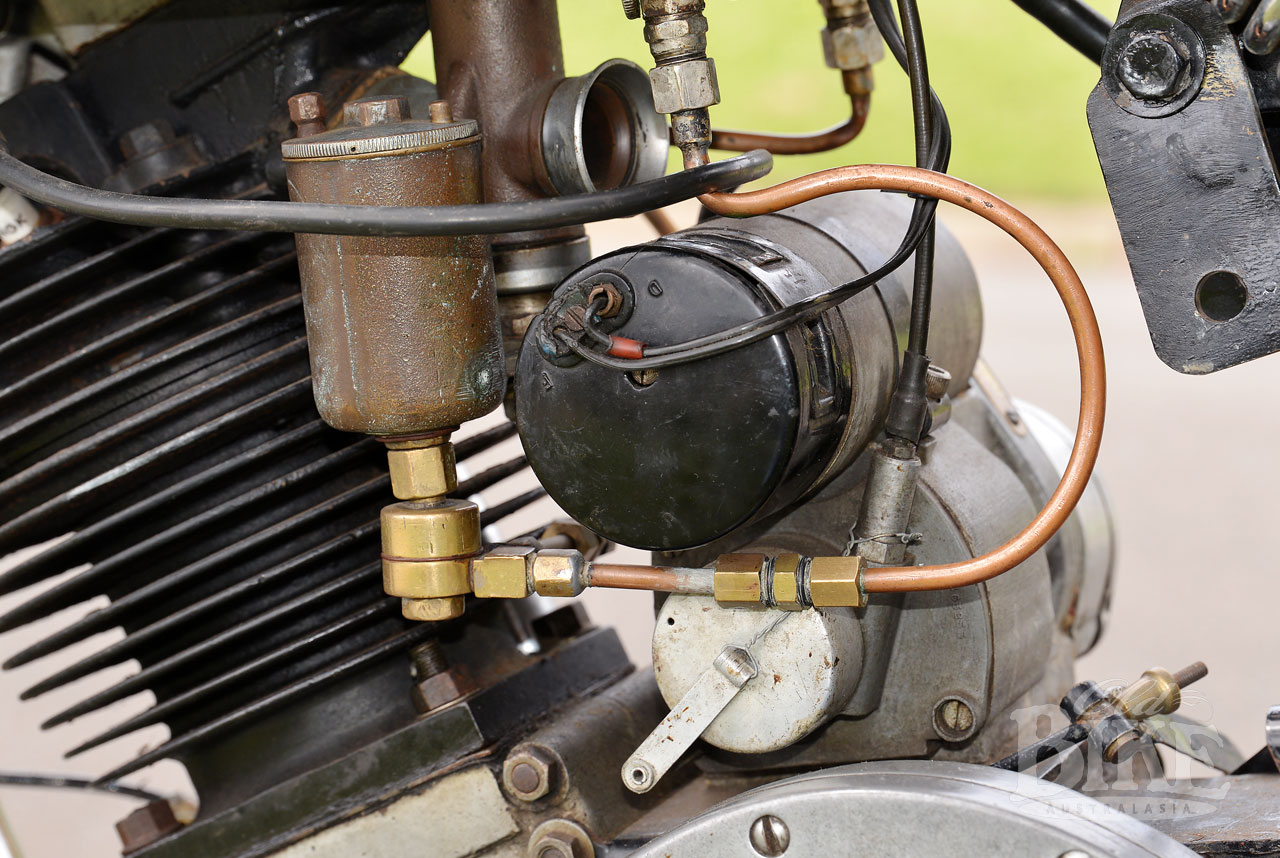
New Imperial’s trademark depicted a mechanical lion, and this particular motorcycle must have had the heart of a lion to remain in existence after a tumultuous life. Purchased new in 1939 by a Mr Aub Coutt from Belmore, a southern Sydney suburb, it passed into the hands of Colin Ralston, before being laid up for the duration of the war.
Post-war, the New Imperial began a somewhat normal course of existence, as everyday transport for Colin Ralston and his wife Valerie. One summer’s Saturday in 1946, the Ralstons had ridden to the Speedway Royale (Sydney Showground at Paddington) and late afternoon following the meeting, decided to embark on a run south to camp for the evening at Kangaroo Valley. Unfortunately, nearing their destination, Colin ran off the road and crashed heavily, badly injuring rider and passenger and extensively damaging the New Imperial. Colin lost the sight of one eye in the accident, while Valerie, pregnant at the time, lost her child in the trauma. The New Imperial was brought back to Sydney as a complete wreck, consigned to the back of a garage in Punchbowl and forgotten.
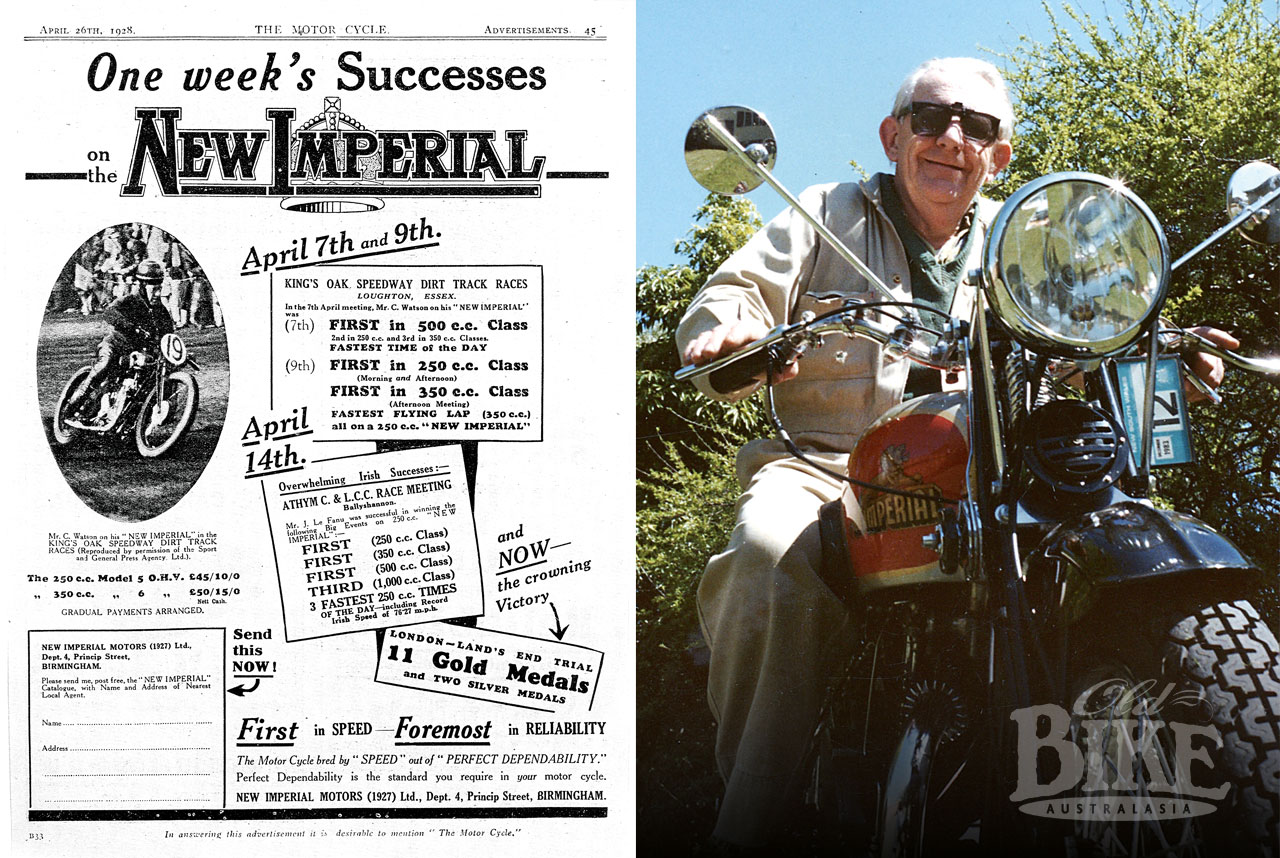
It was 1979 before a repair and restoration was commenced; a long and difficult process given the rarity of this model and New Imperials in general. Many parts had to be found, including a new petrol tank finished in chrome with red panels instead of blue. Four years later the job was deemed complete, but soon after, when Colin attempted to kick start the motorcycle, disaster struck. It is thought that the engine had been timed on the wrong stroke, and a lurid backfire through the carburettor saw the whole lot burst into flames. The New Imperial blazed away, melting components and tragically, setting fire to two other motorcycles in the garage – one a Honda CB92 Benly owned by racer and motorcycle dealer Shaw Crymble that had been raced by Elmer McCabe and Bryan Hindle.
With his pride and joy reduced to ashes, this was the last straw for Colin but his son Roger saw it as a challenge – a very big challenge. This time, the search for parts, including a replacement timing side crankcase, was a far greater chore that involved scouring the world, as well as Australia-wide. Roger is quick to acknowledge the input from local enthusiasts. “Members of the Vintage Motorcycle Club of New South Wales pitched in and helped secure parts as well as helping with advice,” says Roger. “It would have been impossible without their assistance, but it still took until 2008 before it was completed.” This time around, the petrol tank was finished in the original blue and gold instead of the ‘interim’ red version.
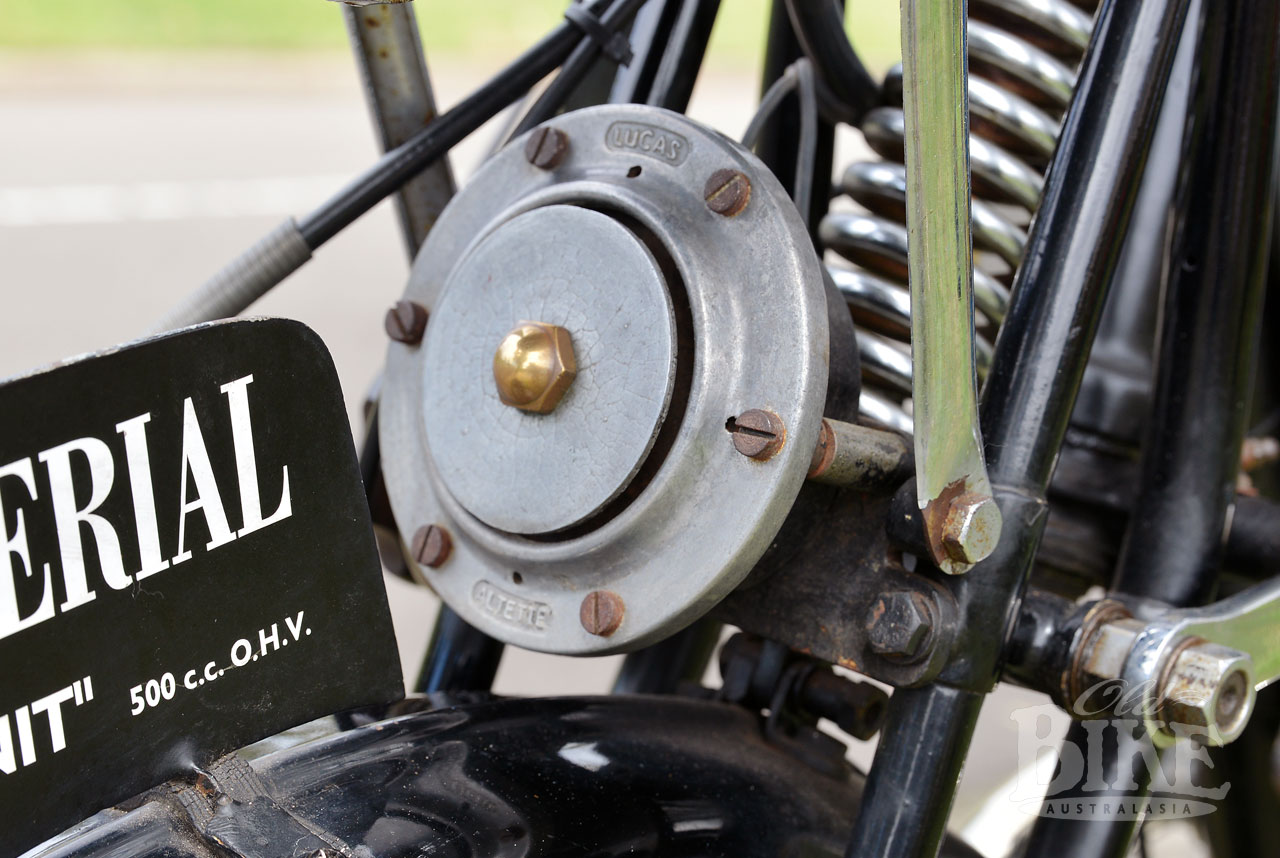
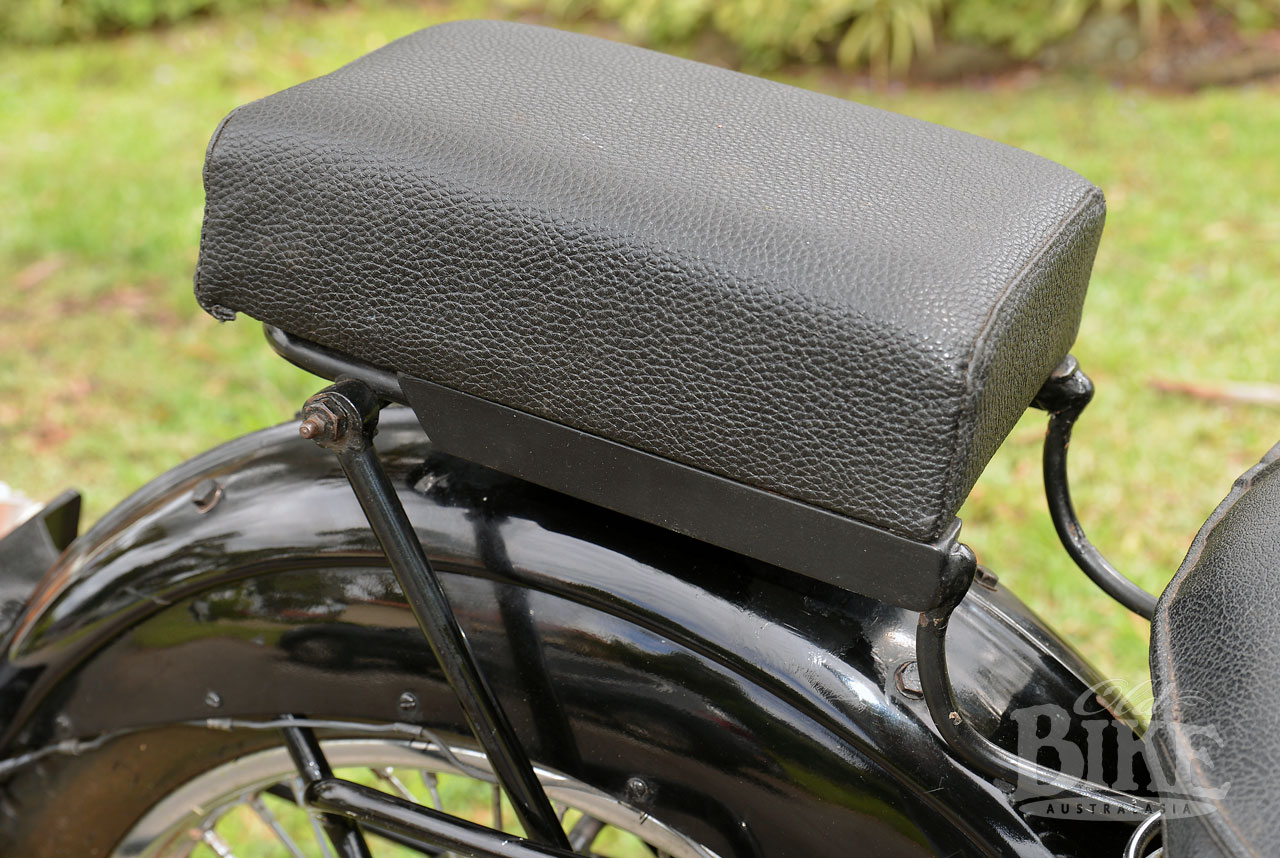
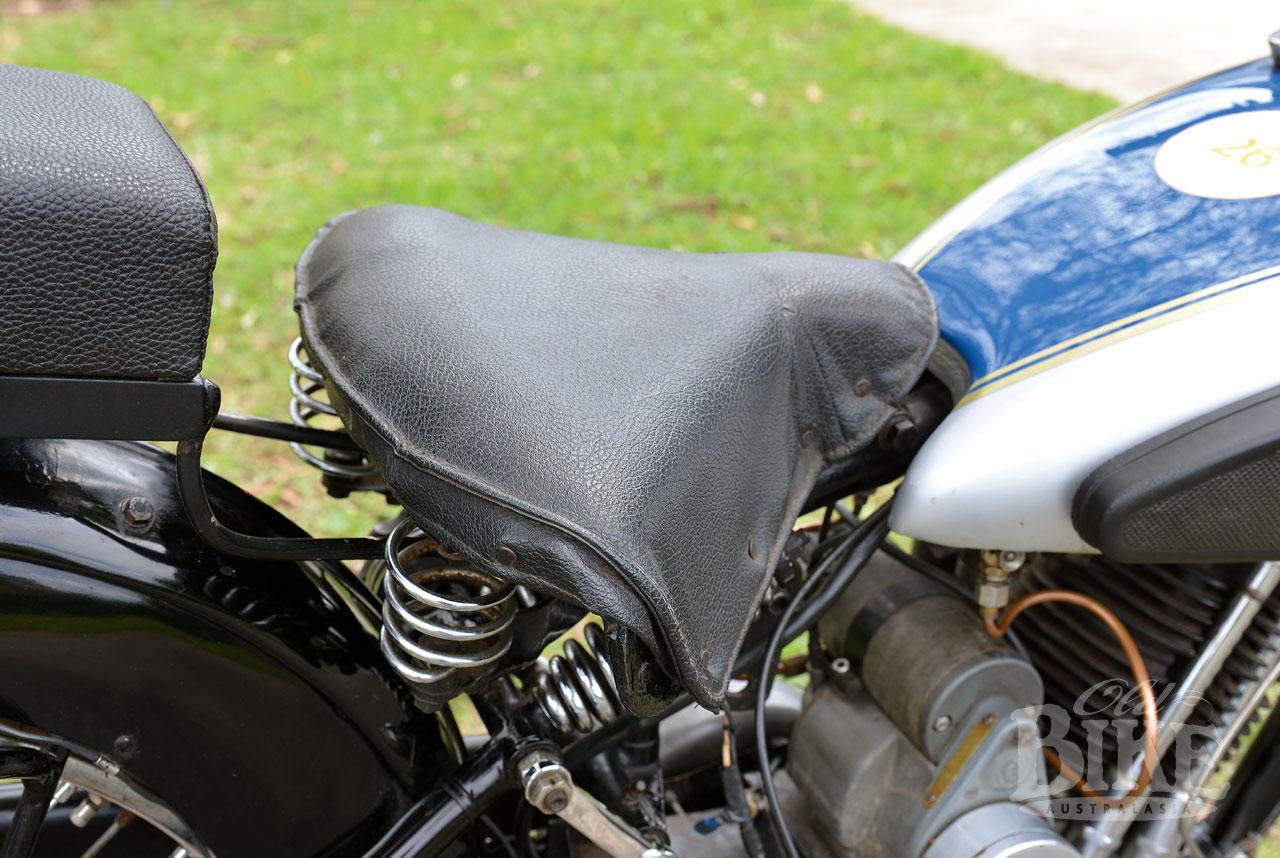
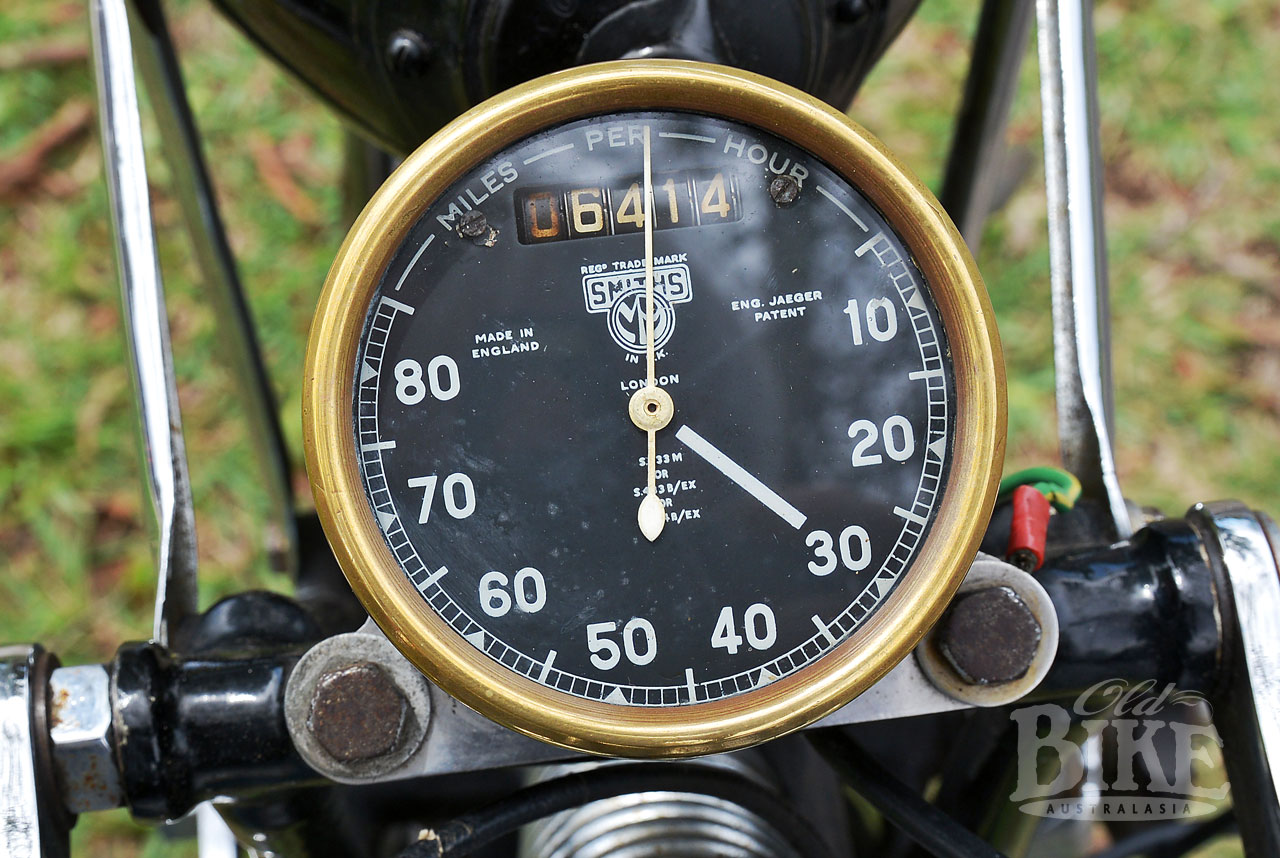
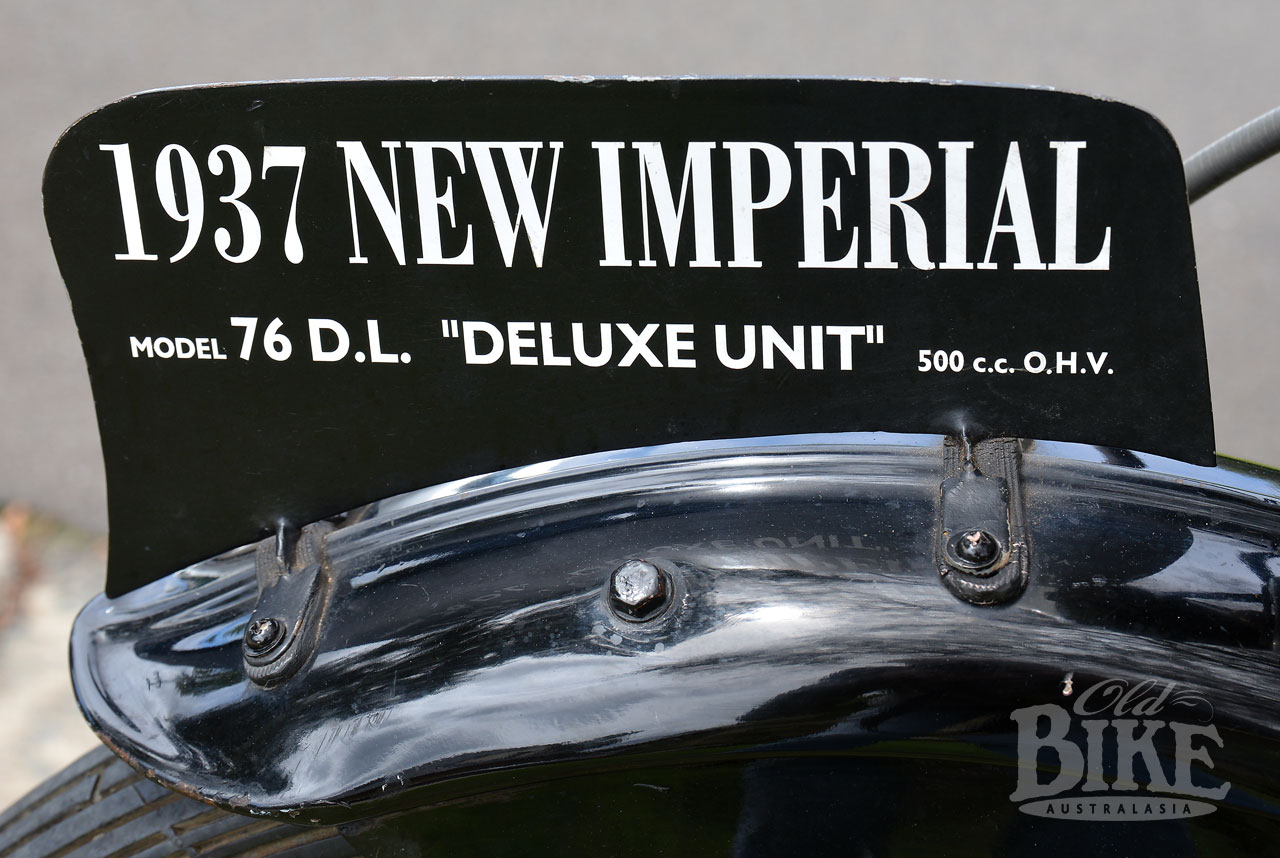
These days, it’s rare to see a New Imperial of any kind, let alone one that has on two occasions had its last rites read. The machine is a tribute to Roger and his son Brian who now represents the third generation of ownership by the Ralston family.
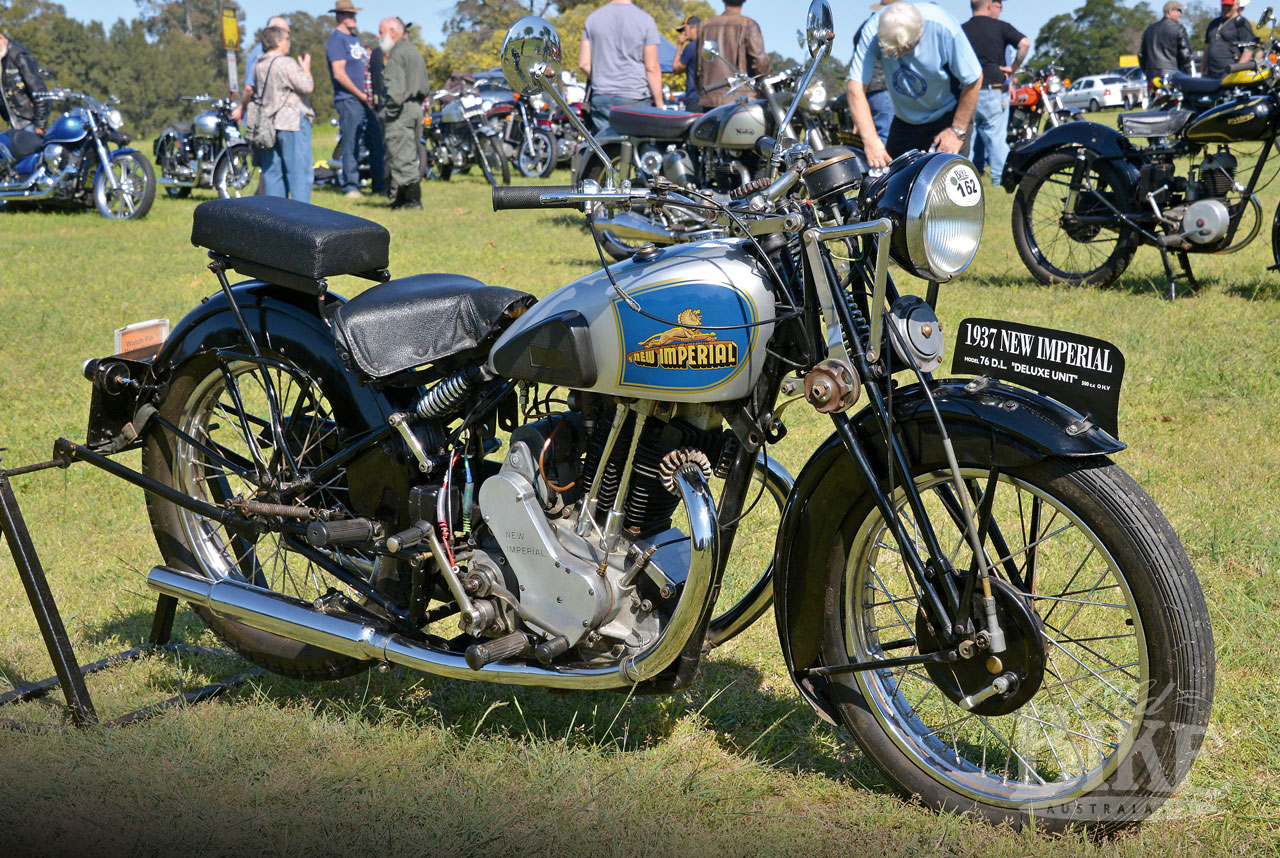
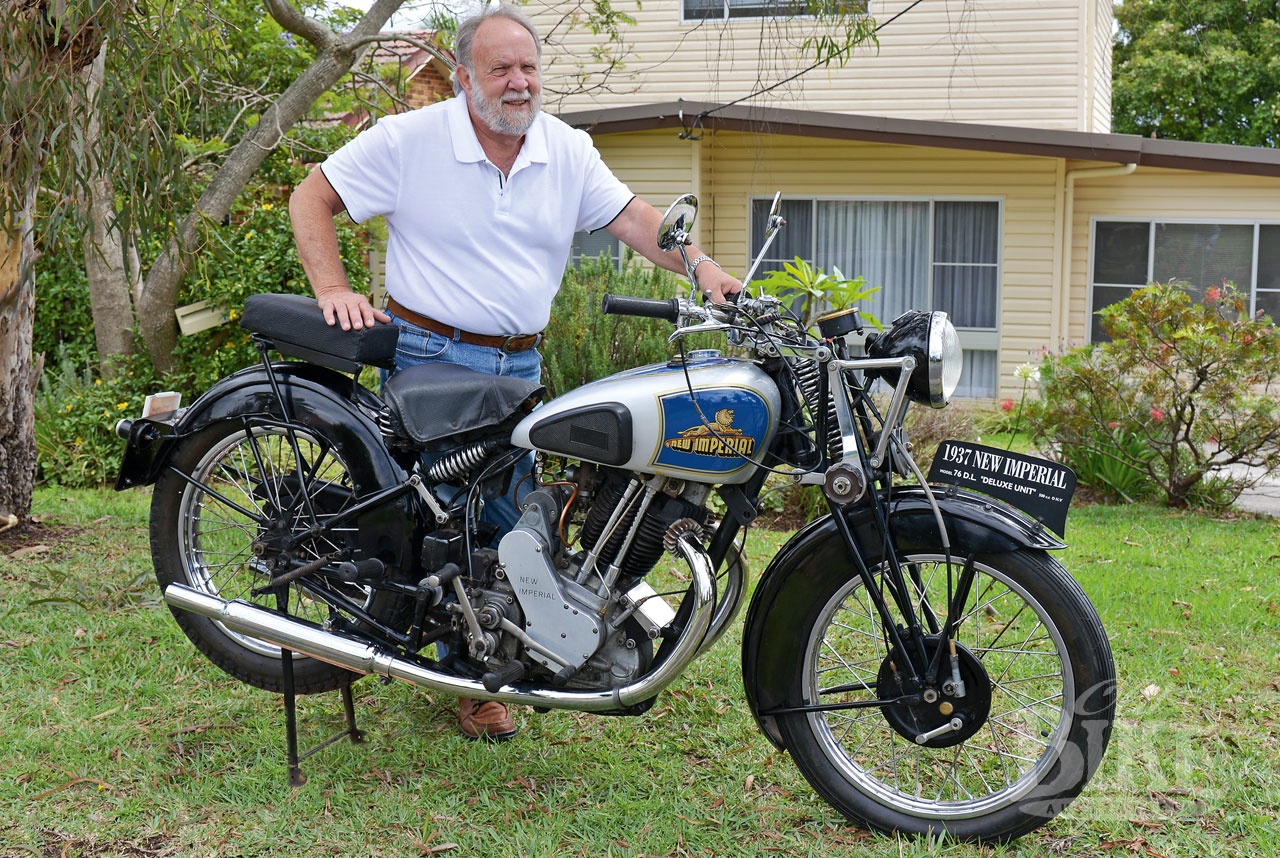
Specifications: 1937 New Imperial Model 76 de Luxe.
Engine: Overhead valve single. Twin exhaust ports, enclosed valve gear.
Bore x stroke: 82mm x 94mm
Capacity: 496cc
Compression ratio: 7.6:1
Lubrication: Semi-dry sump
Carburettor: Amal
Electrics: Lucas Magdyno 6 volt
Gearbox: 4 speed
Transmission: Gear primary, chain final.
Frame: Steel tubular cradle
Suspension: Front: Girder with taper tubing
Rear: Cantilever swinging arm
Tyres: Front: 3.25 x 19, Rear: 3.50 x 19.
Brakes: 7-inch drums front and rear.
Fuel capacity: 3 gallons (13.5 litres)
